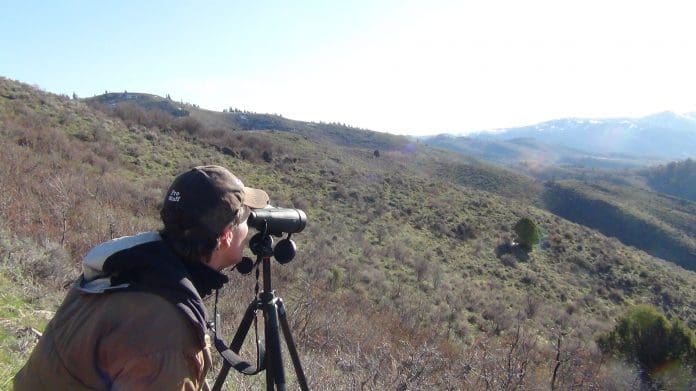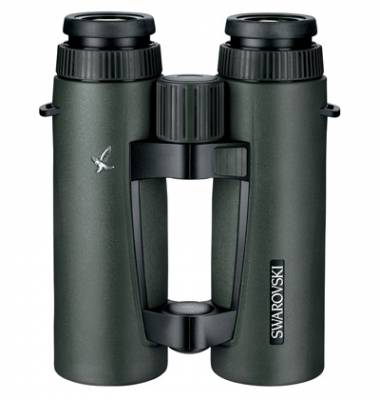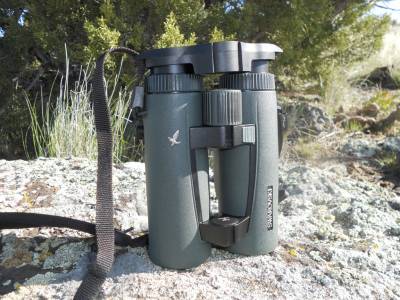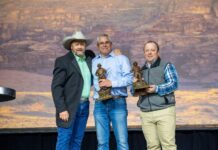If you’re just tuning in, I started the series, “Killing Big Mule Deer”, back in January. If you’re serious about taking the best buck of your life, this series is for you. Before I wrap it up, you can review all the posts at these links:
I gave you both barrels—the whole nine yards—everything I’ve learned since my sweet Daddy started taking me deer hunting nearly 38 years ago, but especially the last 25 years of focusing exclusively on big deer.
There is still one more technique to go— the top of the heap per say. Before I get to it, I’d like to say something about long-range shooting as a technique for killing big mule deer.
Good long-range shooting ability can lessen the need for some of those techniques I wrote about. However, many big bucks live in the cover during hunting season where long shots aren’t possible. Looking back, I can say that in 25 years of chasing big mule deer, I’d have at least one more giant buck (a 210″, 35-wide Colorado deer) in my collection if I was proficient at shooting 500-1200 yards. Bucks of that caliber are so hard to come by that I have to conclude that taking even one more in a lifetime makes long-range shooting capability a viable technique for a trophy mule deer hunter.
At this point in my life, I haven’t enough skill to write about it. I’ll leave that subject to our experts on Rokslide like Sam Millard, our Long Range Editor and Ryan Avery, my Rokslide partner. These guys get it done way out there! Also, check out Hells Canyon Armory if you’re building a long-range rifle.
I believe glassing is the number one technique a big buck hunter must develop. Without it, you are crippled. However, I’ve found that unless I’m handy with the other techniques I laid out, glassing alone won’t get it done. Virtually every one of the big deer I’ve taken have been by some combination of all techniques. I might glass up a great deer but if he disappears into the cover, it’s going to be tracking, still-hunting, obeying the wind, and ambush hunting that will get me the shot—but it all starts with glassing.
Besides my weapon and my warm clothing, my optics are my most important piece of gear—but knowing how to choose and use them is even more important. This blog post will kick off another series on why I select and how I use my optics, including some reviews on new glass that you might consider.
Optics Package
Over the years of focusing on big deer, I’ve learned that I need three types of optics:
1) A binocular in 7x or 8x power (preferably range-finder equipped)
2) A spotting scope with 25-60 power (fixed or variable)
3) A 15x-20x binocular (tripod mounted)
I’ll be examining each of those types of optics in my upcoming blog posts. Let’s start with the low power binocular first.
Because mule deer hunting is typically an active pursuit, I’ve found that the lower powers of 7x or 8x serve me the best. A steadier viewing image trumps more magnification in my book, and the lower power binoculars deliver that steadiness. I also prefer the wider field-of-view of a lower power to catch bucks in the peripheral view.
I’ve tried a multitude of 10x to 12x glass and hunted with many hunters who use them. Once in a while, someone who’s carrying the higher powers will spot a buck I’ve missed, but more often I’m showing him bucks that he didn’t pick up with the bigger glass. If I’m actually looking at a buck, and have time to mount them on a tripod or rest them against a stationary object, then higher powers are better. However, hunting isn’t just looking at bucks, but for bucks.
Often I’m still-hunting along and need to check something in the distance. I usually can’t sit and steady myself and still see above the vegetation nor is there a tree or rock I can lean against. I have to be able to widen my stance, pull my elbows to my chest and tighten the optic to my face to get steady. I do this dozens to hundreds of times in a typical hunting day and is why the lower power binoculars are better. Although I study center of the image, I’ve picked up many bucks in the peripheral area of the image and is why I want a wide field-of-view.
I even mount my binoculars on a tripod if I’m on a vantage point. While a higher power has an edge, I still find the lower power works in an excellent fashion from a tripod. It’s like studying a photograph shot in HD. I’ve found hundreds of hidden bucks doing this. Most lower power binoculars don’t have a 1/4-20 insert for a tripod mount but no worries. I just set the binoculars on the flat top of the tripod head, sling the strap around my neck (in case I knock them off) and glass away. This saves me time, gadgets, and weight in my pack.
I’ve been carrying a rangefinder about 11 seasons now. If I’m rifle hunting, it invariably ends up in my pack once I get tired of it being in the way. When I’m archery or muzzleloader hunting, I keep it around my neck, but it always seems an inconvenience and makes extra noise. As I wrote in Moving in Deer Country Part I and Part II, big mature bucks don’t put up with much noise or movement, even at hundreds of yards away. Juggling both a binocular and rangefinder just ups their odds of them detecting me. I’ve longed for a good binocular/rangefinder combo for years.
Thanks to the good people at Swarovski Optik, (and Aron Snyder) I’ve got my hands on a pair of their new EL Range 8×42 binoculars.
This top-tier combo binocular/rangefinder solves the problems of fiddling with two instruments. If they live up to the Swarovski name, the viewing experience and ruggedness will meet or exceed the high bar I’ve set for this trophy mule deer hunter. I’ve only had them a few weeks and so far all I can say is “WOW!”
So check back often (or better yet “Subscribe to blog, upper right under Fitness/Other links so you get email notification) as I’ll be reviewing these binoculars and the other optics in my personal optic package over the next few months. Lord willin’ and if the creek don’t rise, I’ll also be taking them along on several Live Hunts this fall where you can see them perform in-the-field in video and pictures right here on the Rok Blog.























Robby – can’t get enough of these posts. Great info and thanks for sharing.
Can you write it bit about What MOTIVATES you to to hunt Big Bucks? What is it from within that pushes you to hold out for the BIG one?
Something you were born with, taught by your father, developed from within?
When you’ve pushed yourself to the limit and are physically and mentally spent, how do you stay focused and push-on?
Hi Phil1,
thanks! You asked about what motivates me to hunt big deer? It’s a complicated answer, but I’ll give it a shot.
My father, Doug, got me started at 8 years old. His father (my grandpa) was a sniper in WWII who also loved to hunt. Grampa’s amazing shooting ability combined with an affinity for big deer created a buck hunting culture in the Denning household where my dad and his three brothers were raised. This was in the 50’s and 60’s in SE Idaho when there were some truly giant bucks around. It was the perfect storm. My Dad really got the bug and eventually passed that on to me. By my late teens, I knew that buck hunting was going to hold a special place in my life. I’ve spent my adult life pursuing that passion. You can read more at the blog post http://www.rokslide.com/rokblog-is-here
For me, deer hunting is about learning. By forcing myself to hold out for bigger and better deer, by default I’ve hunted hundreds of more days than if I’d settled. It was those days, years really, that have allowed me to keep learning (got a long long way to still go). When you go that far with something, it’s hard to stop. I’ve seen so many times that when you just keep at it, good things happen. I’m a Bible thumping Christian and believe God’s Word in Proverbs 14:23, “All labor is profitable.” He’s proven it many a time.
Of course there’s always some level of pride at work, but I try to ignore that and do it because I love it. I can say I truly love deer hunting and that is what pushes me on. I also have a deep desire to share with and learn from others, hence the Rok Blog. Thanks for asking. I don’t often get to think that deep on the issue.
Thanks Robby – it seems like you’ve got a genetic-disposition for pursuing the BIG one’s a great perspective on making your time in the field count.
Thanks Robby for the series we can all use a little refresher from time to time
Comments are closed.